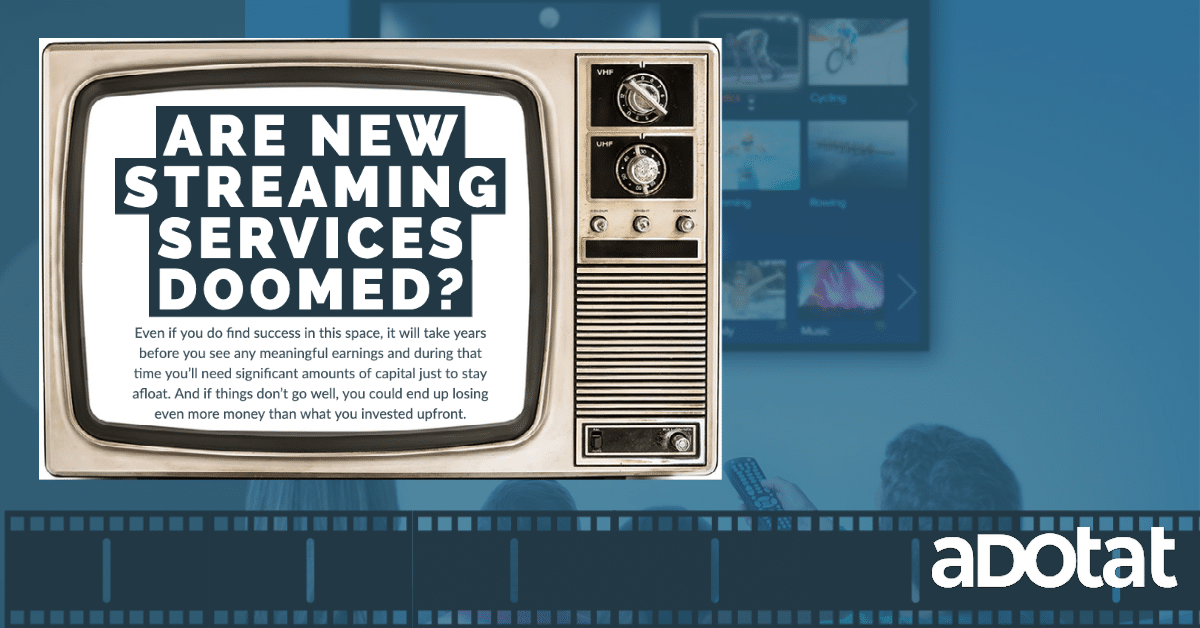Launching an online streaming video service to compete with Netflix was once thought of by investors as having a huge potential upside. However, the tide has turned as the market has become so competitive that making money can take years and in the meantime you could burn through billions in cash.
Even if you do find success in this space, it will take years before you see any meaningful earnings and during that time you’ll need significant amounts of capital just to stay afloat. And if things don’t go well, you could end up losing even more money than what you invested upfront.
So how do we measure success in the streaming world? Is having subscribers enough, or do we have to see actual revenue and growth sooner than later?
When it comes to raw numbers, the differences in the companies is stark.
Disney+ has nearly reached the 100 million subscriber mark but Peacock is at 18 million subscribers only. Netflix is at 223 million subscribers, and Amazon Prime following close at 200 million or so. This is a huge difference to make up.
Peacock does have a strong hold on its users, however. A recent study by Nielsen showed that Peacock viewers watch an average of six hours more than Netflix viewers per week.
Paramount+ has capped what Paramount Global CEO Bob Bakish describes as it biggest quarter in its history with launches in Germany, Switzerland and Austria.
The latest expansion, which brings its total reach to 45 markets, comes just a week after the streaming platform’s launch in France. The company has been on a tear since Bakish took over as CEO, acquiring Starz in 2018.And with Netflix and Amazon Prime already established market leaders in many of these territories, Paramount+ will have to work hard to make an impression on international audiences.
It’s clear that there is some room for growth in the industry, and competition can make waves.
The billions of dollars that streaming companies have spent on content far exceeds what they’ve earned. No profit is bad, especially when the competition is fierce.
“Starting a direct-to-consumer service takes an incredibly strong stomach for losses,” said BTIG analyst Rich Greenfield. “If you want to win, it’s very expensive.”
The new leaders of the major film studios, re-focused on financial concerns and other priorities. For Disney under newly returned CEO Bob Iger—perhaps because it is his home studio—this seems to mean shoring up another business: theme parks. Streaming might still be a priority, but first? Maybe not anymore
One of the victims of this massive spending to compete in the streaming video market has been Warner Bros. Discovery, whose stock has fallen over 50% under CEO David Zaslav’s watch
During a recent conference, he revealed that HBO had spent $2.5 billion in 2019 and made a profit of $2.5 billion—a stark contrast to its 2021 numbers where it lost over 3 billion dollars on content licenses alone when compared with the previous year’s total spending of 7 billion (prior to restructuring costs). “We are rightsizing HBO Max,” they said.
The business is now a mature one, with its growth potential greatly reduced. Where can streaming companies be successful in the future? The typical household now has multiple TV subscriptions, but how many hours of television can anyone watch per day?
I also have a question about the relationship between content creation and profits. According to Variety, Peter Jackson’s Lord of the Rings spinoff series had an estimated budget per episode of $60—PER EPISODE – although this number could be lower. For comparison, Game of Thrones cost around $10 million per episode, and started with less than $6 million when it launched.
It’s possible that the high cost of production could explain why HBO Max didn’t have a lot of original content available at launch.
Streaming services are spending more money to build up their libraries of content, but they aren’t benefiting as much from adding new subscribers because the streaming landscape has matured—most people have locked themselves into one service or another.
According to Kantar data, as of December 2021, 85 percent of American households subscribed to a streaming service. However over-the-top video services have grown at only a 2 percent annual rate—making it difficult for new companies enter the market.
Despite adding 9 million subscribers in the US over the past several months, Disney Plus lost $1.5 billion in direct-to-consumer revenue due to an “increase in programming and production costs” as well as a lack of straight-to streaming releases from its namesake studio.
Recently, Ben Affleck characterized the Netflix approach to making movies as a “assembly line” that prioritizes quantity over quality. If this is correct, then they are making worse productions for more, perhaps because they are emphasizing special effects and CGI over content?
He asked Netflix a question. “How is [Netflix] going to make 50 great movies in one year? It’s impossible! … You just can’t do it.
Streaming television services have raised their prices more often than not for the past year, and it’s beginning to feel like there’s something systemic about that.
Many streaming TV services have raised their prices in recent years, most recently Netflix, even as they added a free model. YouTube TV also made waves for price hikes—but are these companies being greedy or can we understand why they’re making this move?
It’s a lose-lose situation. While some streamers are losing money by paying to get content on their platforms, others are also losing money—but for different reasons: distributing it themselves instead of having someone else do so. The result? Price hikes across the board.
In an interview with the Financial Times, media mogul John Malone said that “As far as streaming video goes…Let’s face it. Everyone went for this mad Oklahoma land rush of streaming…That was a fool’s errand.”
However, we’ve seen the success of companies that offer unlimited free streaming. Tubi and Pluto are two such services—Plex, Samsung TV+, and Roku Channel among others—that provide consumers with ad-supported video on demand (AVOD) or through free ad-supported TV channels (FAST).
Netflix, for example, has proven itself to be a lose-lose situation.
It started a simple pay base prices—and then getting smacked by repeated price increases. Their “free model” has been an attempt to deal with this, but if this can be successful is up in the air for at least the next few years. Then came low-quality shows, such as original series that weren’t very popular and competition programs with little entertainment value.
It was always part of these companies’ business models to gradually increase prices over time (especially Disney), but as rates continue to climb, many consumers are likely to opt-out of the entire system because they are plain fed up.










